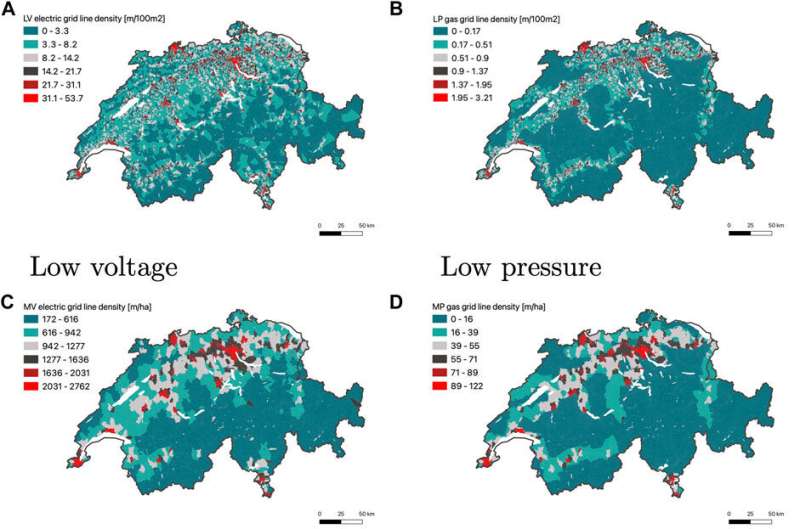
Researchers from EPFL and HES-SO Valais have modeled the Swiss energy system under the hypothetical constraints of carbon neutrality and energy independence by 2050. The results show that these two constraints could be met while reducing energy system costs by about 30% compared to 2020.
A carbon-neutral and independent Swiss energy system in 2050 is theoretically achievable using the currently untapped local renewable energy resources. This system would even be cheaper than the country’s 2020 energy system modeled with the same assumptions, with up to 30%–32% cost reductions. Such are the findings of an extensive study led at EPFL and HES-SO Valais, that have the potential to pave the way for a reinforced plan towards more domestic investment in clean energy.
Though theoretically possible, the total independence of the Swiss energy system is not a goal per se. The carbon-neutral constraint by 2050, however, is aligned with the text of the Federal Act on Climate Protection Objectives (submitted to the Swiss vote in June 2023).
The scientists decided nevertheless to use their model, the multi-energy and multi-sector modeling framework EnergyScope, to push Switzerland into a fully energy-independent state in order to theoretically guarantee the security of supply and later calculate the impacts of the imports and exports. The model generated cost-optimal investment options that satisfy the demands of Swiss society defined as households, transportation, and industry and focus on the role of the existing or reinforced infrastructure.
The researchers from the EPFL School of Engineering’s Industrial Process and Energy Systems Engineering group (IPESE), led by François Maréchal, found that to meet the aforementioned goals, Switzerland should boost the generation of photovoltaic (PV) and wind electricity and that an economic optimum could be achieved by covering 60% of Switzerland’s roof area with PV systems.
“Switzerland still has a largely unexploited solar PV potential in already-built-up areas. An economic optimum could be reached if fewer than two out of three roofs are covered. The next step is to determine which roofs are most suitable,” explains EPFL and HES-SO Valais Ph.D. student Jonas Schnidrig, first author of the recent study published in Frontiers in Energy Research.
Since the sun shines more intensely in summer, but the wind blows more intensely in winter, it is necessary to find the right balance between electricity generation and seasonal storage to meet the Swiss energy demand at all times, especially in the winter season. The study suggests that the summer-dominated solar production could be most optimally balanced by a deployment of wind capacity, producing mainly in winter together with hydroelectricity and biomass.
They also show that plenty of equivalent solutions exist and they assess their sensitivity to the cost uncertainties. The models reveal the interdependence of the options and the impact of the technological choices on the other investments and on the infrastructure.
The researchers conclude that “the main difference here is the nature of the costs: the current Swiss energy system is based primarily on (cheap) imports rather than investment. The consumer therefore pays and relies on using resources and technologies that are indeed invested and operated outside Switzerland,” explains François Maréchal. “In contrast, the future system we have modeled is based on local investment, the use of our own resources, and appears to be the most economical and resilient choice in the long run.”
More information:
Jonas Schnidrig et al, On the role of energy infrastructure in the energy transition. Case study of an energy independent and CO2 neutral energy system for Switzerland, Frontiers in Energy Research (2023). DOI: 10.3389/fenrg.2023.1164813
Citation:
Swiss energy system could be independent and carbon-neutral by 2050 (2023, June 2)
retrieved 2 June 2023
from https://techxplore.com/news/2023-06-swiss-energy-independent-carbon-neutral.html
This document is subject to copyright. Apart from any fair dealing for the purpose of private study or research, no
part may be reproduced without the written permission. The content is provided for information purposes only.
Stay connected with us on social media platform for instant update click here to join our Twitter, & Facebook
We are now on Telegram. Click here to join our channel (@TechiUpdate) and stay updated with the latest Technology headlines.
For all the latest Technology News Click Here
For the latest news and updates, follow us on Google News.
